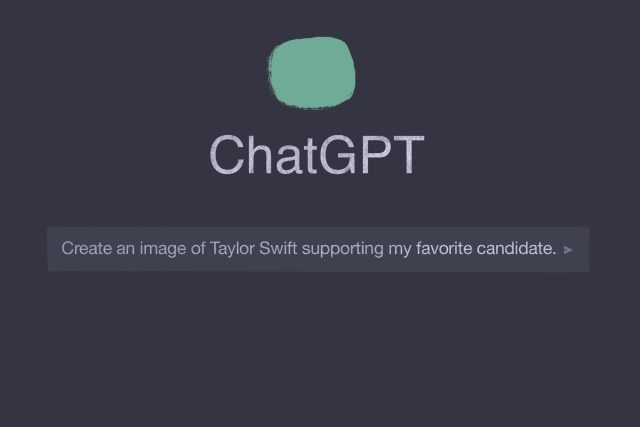[ad_1]
Last month, former President Trump posted an image of pop star Taylor Swift holding a sign that says “Taylor Wants You To Vote for Donald Trump” on the social media site Truth Social. Swift, who endorsed Biden in 2020, made no such statement; the photo was made by artificial intelligence. Although this post generated criticism from political commentators and the public, AI-generated images continue to be posted by politicians and partisans alike, depicting anything from Kamala Harris delivering a speech at a Communist Party rally to Trump riding a lion like a horse. While some of the examples seem so nonsensical that they are easily clocked as fake, images like that of Swift demonstrate the ways that AI images can be weaponized. The use of AI to generate false political images is a dangerous political strategy which necessitates regulation.
When politicians and their supporters post AI-generated images on social media, they spread disinformation for all to see. This disinformation becomes especially harmful when its impact is seen during a historically impactful election year. AI-generated images have the potential to be very destructive to both campaigns, as they are both turning toward heavily-online campaign strategies. Both campaigns are using social media to gain crucial support, particularly via strategic outreach to young voters — a demographic that dominates social media and appreciates the innovation of AI at a higher rate than older generations. An issue is encountered when there is a continued dispersal of AI-generated images and their use in a political nature.
Although political candidates’ use of AI-generated images is relatively new, the images themselves are not. The origins of AI-generated images date back to the 1960s, when they were used to display the capabilities of early computers. This is still true, as the hyper realistic AI-images we have today are a testament to the advancement of computers. In some cases, these computer-generated images are hardly decipherable from real images.
As AI-generated images — like those posted by politicians and their supporters — continue to improve in quality, it becomes more difficult for viewers to determine if an image is real or AI-generated without using external tools, like AI-image detectors. It is this very concern that should motivate state and federal lawmakers to enact laws that regulate the use of AI-generated images. These regulations should target specific AI-generated images that look to directly influence elections and are used to directly mimic a realistic event and deceive its viewers. Just like fair use laws, these regulations shouldn’t apply to AI-generated images that are used to parody some part of the candidate as long as it is a distinguishable parody.
Although using regulation to police online posts can seem to violate the freedom of speech guaranteed by the First Amendment, regulation of AI-generated political content is given a legal basis by laws enacted by the state legislatures of Alabama and Colorado. Alabama’s regulation specifically aims to stop the use of AI-generated content that a reasonable person can confuse for a real image. However, Alabama’s law relies heavily on the court to determine what a reasonable viewer believes. If given enough leeway, the law could end in overregulation or no regulation at all, with both outcomes leading to potential abuse.
While achieving federal regulation is a grandiose aspiration, it isn’t the quickest path to getting AI regulated at the local level. Michigan’s state legislature can pass its own regulations in a faster, more resolute manner. Its lawmakers can avoid the potential limitations of a federal law and guarantee that even those unassociated with a campaign would still face repercussions for the use of AI-generated content for political means. These more local regulations can also be written to protect those who use AI-generated images for personal activity and parody from those who intend to use it in a harmful, deceiving manner. Starting from the bottom of the legislative chain and moving to the top could be the most effective strategy in controlling the issue of political AI-generated images.
Voters should not take AI-generated content for political use lightly. Campaigns aim AI-generated images at impressionable voters, and advancements in AI could make this task even easier. Events and endorsements influence how one will vote, so an AI-generated endorsement by a favorite pop singer could just change the results of an election. Although no distinct regulations exist in most states right now, staying vigilant and warning others of AI-generated images in politics can make a difference. Taking a few extra seconds to look over an image can help distinguish fact from fiction.
At this point in time, it is important to note that while many states have put forward a bill in their state legislature to begin regulating AI-generated images, Michigan is not one of them. The prospect of getting a bill introduced and enacted in the Michigan state legislature before the election are essentially zero, but pushing for regulation now can help guarantee that future elections are free from the growing influence of AI-generated images. It is even more important to encourage your representatives and senators to pass these same regulations on a national level, as not all states will pass the same protections as others. A federal law can guarantee uniformity in policy and protection of this country’s electoral integrity.
Thomas Muha is an Opinion Columnist who writes about the legal and economic issues facing the internet. He can be reached at tmuha@umich.edu.
Related articles
[ad_2]
Source link











